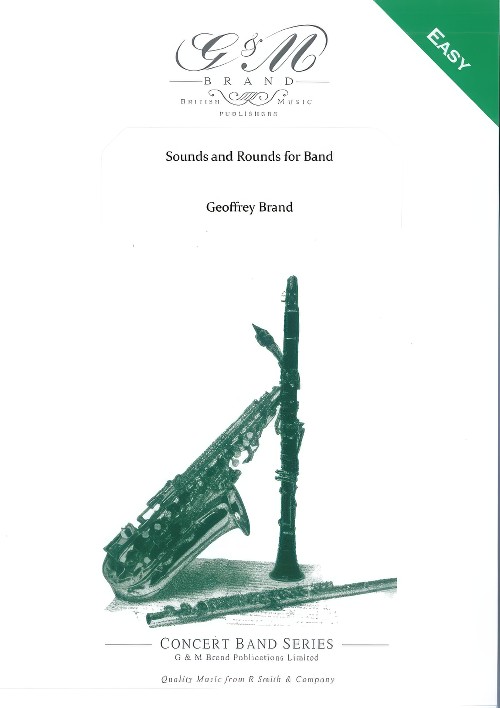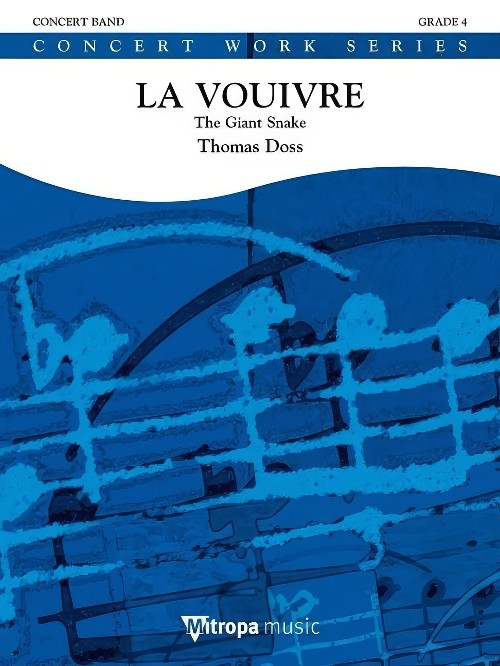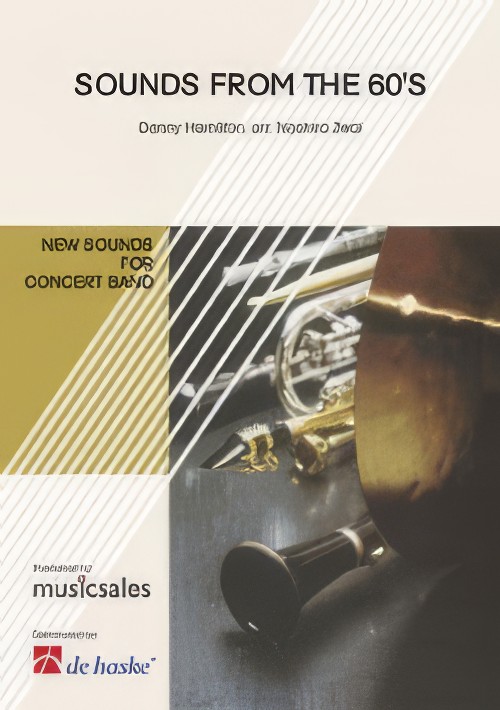Results
-
 £274.99
£274.99Symphony No. 2: States Of Mind, Opus 87 - Teo Aparicio-Barberán
I- Logos (reason)II- Pathos (emotion)III- Ethos (credibility)The ancient Greeks believed that music shaped the character of man. In Egyptian temples, music was an essential part of the magical rites to alter the course of nature or to treat illness.And today we know that sound can actually alter matter. The secret of music lies in harmony and mathematics, as many great musicians and experts have always known.One of the most important qualities of music is that it enables the listener to focushis attention inwards instead of on what is around him. It is indisputable that music can inspire emotion. Music leads us into a universe of emotions that are difficult to put into words. In short, music reaches into corners of our soul and thoughtsthat words cannot reach and makes it possible to more clearly describe these different States of mind.The composer of this symphony also believes that each "musical argument" must be constructed so that it will induce the desired reaction in thelistener.Music: more than wordsIn recent times, most orchestral symphonies have been based on a story, a text or something similar so that their composition must be structured accordingly.The intention of this work by Teo Aparicio-Barbern is quitedifferent. The composer describes the three elements of the argument as the only formal structure of the work. Since certain philosophers in world history were able to subdivide grammatical argument, why shouldnt that also be possible for the musicalargument?Since ancient times the power of the spoken word has captivated mankind. How can an argument move people and mobilise the masses? Where does the power of words come from today? The answer lays not so much in what people say but in how theysay it.Rhetoric is one of the oldest humanist disciplines in Western civilisation. Aristotle, in the 4th century BC, called it the art of persuasion. Indeed, the terms rhetoric and persuasion are mutually interchangeable.More than 2000 years agoAristotle structured his rhetoric according to the following three elements: the logos, the pathos and the ethos.Logos (words, reason) is the reasoning that gives freedom to the structure of the text by expressing what one wishes to say usingspecialist terms. With logos we create arguments to receive public approval and to defend our ideas.Pathos, the second element, refers to the effective use of public psychology. Pathos can be considered as the capacity to induce the desired emotionalresponse in the public, by creating an emotional connection with the public so that they accept our message.The third element, ethos (credibility), refers to the character of the speaker and is perhaps the most important of the three elements.Aristotle based his concept of ethos upon his belief that truth and justice will always have the upper hand over anger. He believed that what was true and good was easier to prove and was more persuasive.This second orchestral symphony from thecomposer from Enguera follows these three parameters of the argument according to Aristotle. Each movement tries to summon a different state of mind in the listener so that the message itself can be better understood and appreciated. Apart from thesethree general concepts the music is only structured, as Claude Debussy would say, in a "formative way".The first movement, logos, is based on a scherzo melody that undergoes various changes in rhythm and harmony. The arguments are presented by meansof conventional techniques of composition. The second movement, pathos, is characterised by suggestions of sound. It is subdivided into two large parts. The first part is based on a five seven sequence with five sounds that are repeated in differentenvironments, structures and dynamics. The second part, which is largely tonal, brings out more directly the emotional overtones that each argument must have. The third movement, ethos, is a faithful rendition of the composers personality. In thislast part, clear rhythmic sequences stand out, there are large dynamic contrasts and lots of tone variation. In addition, and this is quite in keeping with the composers earlier work, the harmony in States of Mind is handled in a manner that is bothoriginal and efficient, as a result of which Aparicio-Barberns message is well understood by the listener.This second symphony by Teo Aparicio-Barbern is devoted to "my dear Henrie Adams, a guiding light in this eternally dark musical world. Thankyou for everything."
Estimated dispatch 7-14 working days
-
 £71.00
£71.00The Silence after Thunder
The Silence after Thunder captures the emotional aftermath of a battle, where the sounds of war give way to a haunting silence. The piece opens with intense trumpet fanfares, building to a chaotic clash of forces. As the battle subsides, the music shifts to a somber, quiet reflection, leaving the listener with a sense of desolation and the eerie stillness following a storm.
Estimated dispatch 12-14 working days
-
 £59.95
£59.95Sounds and Rounds for Band (Concert Band - Score and Parts) - Brand, Geoffrey
If you have ever stood before a Concert Band and wondered how you may best help them to sound better then SOUNDS will help. SOUNDS are exercises designed to improve DYNAMICS, RHYTHM, CRESCENDO and DIMINUENDO, INTERVALS, RESTS and ACCENTS. The exercises can also be used for warm-up purposes. They are interesting to play whilst creating an awareness of some of the fundamentals of good performance. ROUNDS are a form of Canon in unison (or octaves) with the players entering at regular rhythmic periods. The first Rounds were printed in 1609 so people have enjoyed performing this form of music for a very long time and still do. Kookaburra comes from Australia, Row Row Row the Boat is English, Frre Jacques is French and in this version a variation on the original melody has been added which also works as a round and adds to the fun. A full score has been provided in order to facilitate rehearsal.
Estimated dispatch 7-14 working days
-
 £11.95
£11.95Sounds and Rounds for Band (Concert Band - Score Only) - Brand, Geoffrey
If you have ever stood before a Concert Band and wondered how you may best help them to sound better then SOUNDS will help. SOUNDS are exercises designed to improve DYNAMICS, RHYTHM, CRESCENDO and DIMINUENDO, INTERVALS, RESTS and ACCENTS. The exercises can also be used for warm-up purposes. They are interesting to play whilst creating an awareness of some of the fundamentals of good performance. ROUNDS are a form of Canon in unison (or octaves) with the players entering at regular rhythmic periods. The first Rounds were printed in 1609 so people have enjoyed performing this form of music for a very long time and still do. Kookaburra comes from Australia, Row Row Row the Boat is English, Frre Jacques is French and in this version a variation on the original melody has been added which also works as a round and adds to the fun. A full score has been provided in order to facilitate rehearsal.
Estimated dispatch 7-14 working days
-
 £174.99
£174.99La Vouivre (The Giant Snake) (Concert Band - Score and Parts) - Doss, Thomas
This spectacular work is based on the legend of La Vouivre - the giant snake. Suitable as a contest or concert piece, La Vouivre is full of sounds effects such as the sound of a snake, as well as short vocal tutti segments. Due to its expressive and dramatic nature, this musical symphonic poem is a true masterwork. This spectacular work is based on the legend of La Vouivre - the giant snake. Suitable as a contest or concert piece, La Vouivre is full of sounds effects such as the sound of a snake, as well as short vocal tutti segments. Due to its expressive and dramatic nature, this musical symphonic poem is a true masterwork.Duration: 14:30
Estimated dispatch 7-14 working days
-
 £71.50
£71.50Defenders of the Wall - Gary P. Gilroy
An exhilarating tale of bold and heroic warriors from an ancient and imaginary world, sworn to defend their country against fearsome invaders from unimaginable far-off lands. The dramatic sounds are captivating as various musical scenes unfold in vivid fashion. A noble call to duty, ominous sounds of an approaching enemy, fierce battles and victorious celebration - all are present in this musical display of courage and duty!
Estimated dispatch 7-14 working days
-
 £137.99
£137.99Sounds from the 60's - Danny Hamilton
Naohiro Iwai has here combined three of the most popular songs of the 1960's: Surfin' USA (performed by the Beach Boys), Hey Paula (performd by the Pop Duet Paul and Paula) and the instrumental music Diamond Head, by Danny Hamilton, the first big success of the POP J (pop Japanese music). With Sounds from the 60's, plunge back in the grooving tangy sounds of one of the most colourful decades.
Estimated dispatch 7-14 working days
-
 £137.99
£137.99Sounds from the 60s (Concert Band - Score and Parts) - Iwai, Naohiro
Naohiro Iwai has here combined three of the most popular songs of the 1960's: Surfin' USA (performed by the Beach Boys), Hey Paula (performed by the Pop Duet Paul and Paula) and the instrumental music Diamond Head, by Danny Hamilton, the first big success of the POP J (pop Japanese music). With Sounds from the 60's, plunge back in the grooving tangy sounds of one of the most colourful decades.Duration: 7.45
Estimated dispatch 7-14 working days
-
 £82.50
£82.50Music of the Spheres - Maltbie Davenport Babcock
This superb setting of a popular hymn features delicate sororities combined with shimmering metallic percussion that provides an excellent opportunity for young bands to perform lyrically and expressively. Artistic percussion performance is really on display, featuring wonderful sustained sounds of metal percussion instruments that glisten throughout. These resonant sounds blend perfectly with the long vibrant tones of the wind instruments for an overwhelming musical effect.
Estimated dispatch 7-14 working days
-
 £107.50
£107.50Goddess of Fire - Steven Reineke
A magnificent programmatic work for symphonic band that is an offering to Pele, the Goddess of Hawaii's volcanoes. The work opens with primordial, mysterious sounds representing the foreboding volcanoes of Hawaii. We are then introduced to Pele as a tall, beautiful young woman. This is one of the forms she can take and it represents her powers of creation and beauty. This gives way to the active and destructive Pele, often taking the form of an old woman, wrinkled and bent with age. The following lyrical section of the piece is the full statement of Pele's theme of creation and beauty. As this theme settles, we begin to hear the ground pop and crack letting us know that new lava is beginning to bubble and flow. Suddenly and violently, one of her volcanoes erupts, creating massive chaos and destruction. After the eruption subsides, Pele's theme of creation and beauty returns again. A wonderful addition to any concert or festival performance by mature bands. Exceptional in every respect!
Estimated dispatch 7-14 working days
